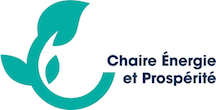Article published in Journal of Cleaner Production
Electric batteries and fuel cells (hydrogen) are competing technologies for the energy transition in heavy transportation. We first explore the conditions for the survival of a unique technology in the long term. Learning by doing suggests focusing on a single technology while differentiation and decreasing return to scale (cost convexity) favor diversification. The interaction between these two factors is analyzed in a general model, which is then applied to the European bus sector. The optimal deployment strategy is derived. It is shown that the existence of a market niche for fuel-cell electric buses (FCEBs) can be obtained depending on the values of a limited set of key parameters. In particular, the existence of a niche for FCEBs depends on a large enough segment, a higher rate of endogenous technical change, and the sustainability of the FCEBs’ advantage, coming from a much shorter refueling time and more extended autonomy. The robustness of this result is tested. Policy implications are developed in terms of support mechanisms for local and global public entities to internalize carbon and learning externalities.
Découvrez en ligne la dernière newsletter et inscrivez vous pour recevoir la prochaine

